Media | Articles
2022 Lexus LX 600 F Sport Review: Built for a different buyer?
Imagine a Toyota Land Cruiser in a Gucci suit. So was the last Lexus LX, and so it is with this latest iteration. Historically, the luxury body-on-frame 4×4 has promised all the same off-road chops and durability as the Cruiser, plus extra swank and a badge that befits the lofty price tag. It’s the spendiest SUV to wear a Lexus badge, and arguably a more fitting flagship in 2022 than the LS sedan or LC500.
With the arrival of the fourth-gen vehicle, new this year, some of the desirable traits that previously defined the LX endure, while others have fallen by the wayside. What’s left is something that feels better suited for the modern full-size SUV segment, but also quite a step away from what the the big truck’s most ardent fans want from it. Let’s take a closer look.
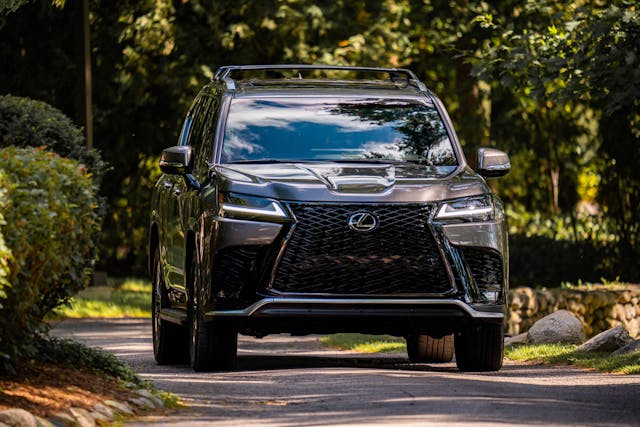
What is it?
The LX 600 is a full-size body-on-frame luxury SUV with a solid rear axle and independent front suspension. Full-time four-wheel-drive is standard, and power comes from a 3.4-liter twin-turbocharged V-6 mated to a 10-speed automatic transmission. Other Toyotas pair this powertrain with hybrid componentry, but the Lexus version makes do with just the gas-burner. Power figures are middle of the road for this class: 409 hp is on the low side, (Cadillac’s Escalade, for comparison, pushes 420 hp from its 6.2-liter V-8), but torque is a stout 479 lb-ft (the Escalade manages just 460). Conventional LXs seat six or seven passengers, although you can also configure one to host just four. Prices range anywhere from around $88K before options to $127K for the four-seater Ultra Luxury trim.
We tested a 2022 LX 600 F Sport, the third in the hierarchy of five trims (Standard, Premium, F Sport, Luxury, Ultra Luxury). The F Sport trim gets a unique black mesh grille design, 22-inch wheels, special front seats, a trim-exclusive red leather interior, performance dampers, a Torsen limited-slip rear diff, and a rear stabilizer bar. Ours rang the register for $107,585 all told, tacking on $5240 in options. Of note: Active Height Control, which uses hydraulic springs to allow the driver to adjust ground clearances depending on the terrain underfoot ($1300); and a Mark Levinson 25-speaker sound system ($2660).

What’s new?
A lot, really. It’s a whole new generation of LX, riding on a new architecture (TNGA-F, in Toyota speak) that it shares with the Tundra and Sequoia. That turbo V-6 is new, replacing an archaic but unburstable 5.7-liter V-8. Ditto the 10-speed automatic, which takes over for an eight-speed unit in the outgoing LX 570. Our tester’s trim is one of two new offerings in the LX line, the other being the new Ultra Luxury trim. The infotainment system finally ditched the weird joystick interface for a two-screen setup that both looks nicer and is much easier to use.
Marketplace
Buy and sell classics with confidence
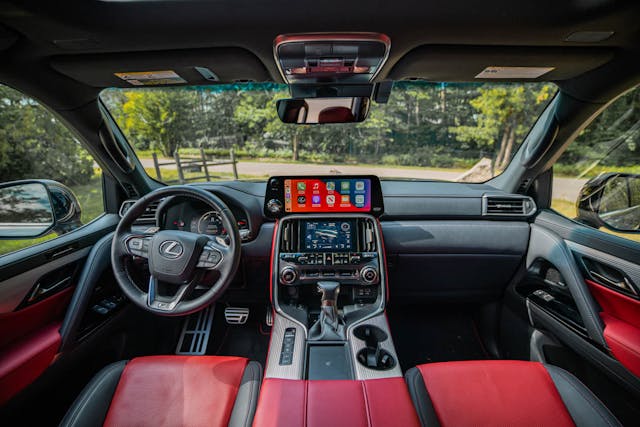
Something that is not new: the LX’s 112.2-inch wheelbase. Lexus proudly touts this figure as a point of consistency over all four generations of this vehicle, dating back to the original J80 generation from the mid-’90s. That matters—for reasons we’ll get to in a bit.
2022 Lexus LX 600 F Sport
- Price: $102,345 / $107,585 (base / as-tested)
- Powertrain: 3.4-liter, twin-turbo V-6; 10-speed automatic
- Output: 409 hp @ 5200 rpm, 479 lb-ft @ 2000–3600 rpm
- Layout: Four-door, body-on-frame SUV
- Weight: 5700 lbs. (estimated)
- EPA fuel economy: 17 city/22 mpg highway, 19 mpg combined
- 0–60 mph: 6.9 seconds
- Top Speed: 130 mph
- Rivals: Mercedes-Benz GLS, Cadillac Escalade, BMW X7, Lincoln Navigator, Infiniti QX80
What it does well:
The new infotainment setup is a remarkable improvement from that of the outgoing model. I wouldn’t call it the best in the segment, but it’s no longer as obvious of a detractor. There are actual buttons for key features that passengers regularly interact with. Seats are all-day comfy, and while the red leather didn’t fit my taste, that’s easily remedied in the configurator’s options menu. One fantastic tech feature: A top-down camera view will automatically pop up on the top screen as you’re coming to a stop and turning the wheel, as you would in a parking lot. For something this big, that added layer of information and precision can be a lifesaver in tight spots.

The new LX’s whole driveline feels more isolated from the cabin than before. That old V-8 was comically loud on start-up and deeply truck-like in day-to-day use. (For some buyers, that was its exact appeal.) By contrast, the new V-6 mill is a church mouse that also happens to be quicker, more efficient, and more powerful. Time will tell whether this engine earns the same reputation for 300,000-mile reliability as the eight. Another nice bonus is the Active Height Control on-demand suspension adjustment, which serves up gobs of ground clearance for rutted roads.
Changes we’d make:
One can see how Toyota was keen to hold on to certain characteristics for the sake of continuity, but that 112.2-inch wheelbase just doesn’t make sense here anymore. The competition has gone to 120-inches-plus to make the third row livable, and it pays dividends. The LX’s rearmost chairs are deeply unpleasant places to spend more than a few minutes. Most folks will use this very large SUV as a two-row with a big trunk.

There are a few foibles in the cabin, one being that the window switches are placed behind the large grab handles on the doors, making them hard to reach. The acronyms on the buttons below the lower screen can be hard to decipher (MTS – Multi-Terrain select, DAC = Downhill Assist Control) and harder to know when to use. (Bump one accidentally, and features like cruise control won’t engage. It can make for puzzling moments in the early going.)
Who’s it for?
In short: Someone who wants a big, truck-like luxury SUV without the German badge or American girth. There was a time where part of the appeal of a full-sizer like the LX 570 was its proven, albeit archaic bones. Heck, people still love the 4Runner and it has a five-speed automatic. But decades-long reliability doesn’t sell like it used to. Luxury to many buyers means tech features and design flourishes. The LX evolved out of necessity to stay competitive, but it now risks hewing closer to the European competition than ever before. What the Lexus should retain, however, is a sterling resale value compared to a BMW X7 or the like. That alone might make it the way to go, especially if you’re the type to keep a family hauler for, well, the long haul.

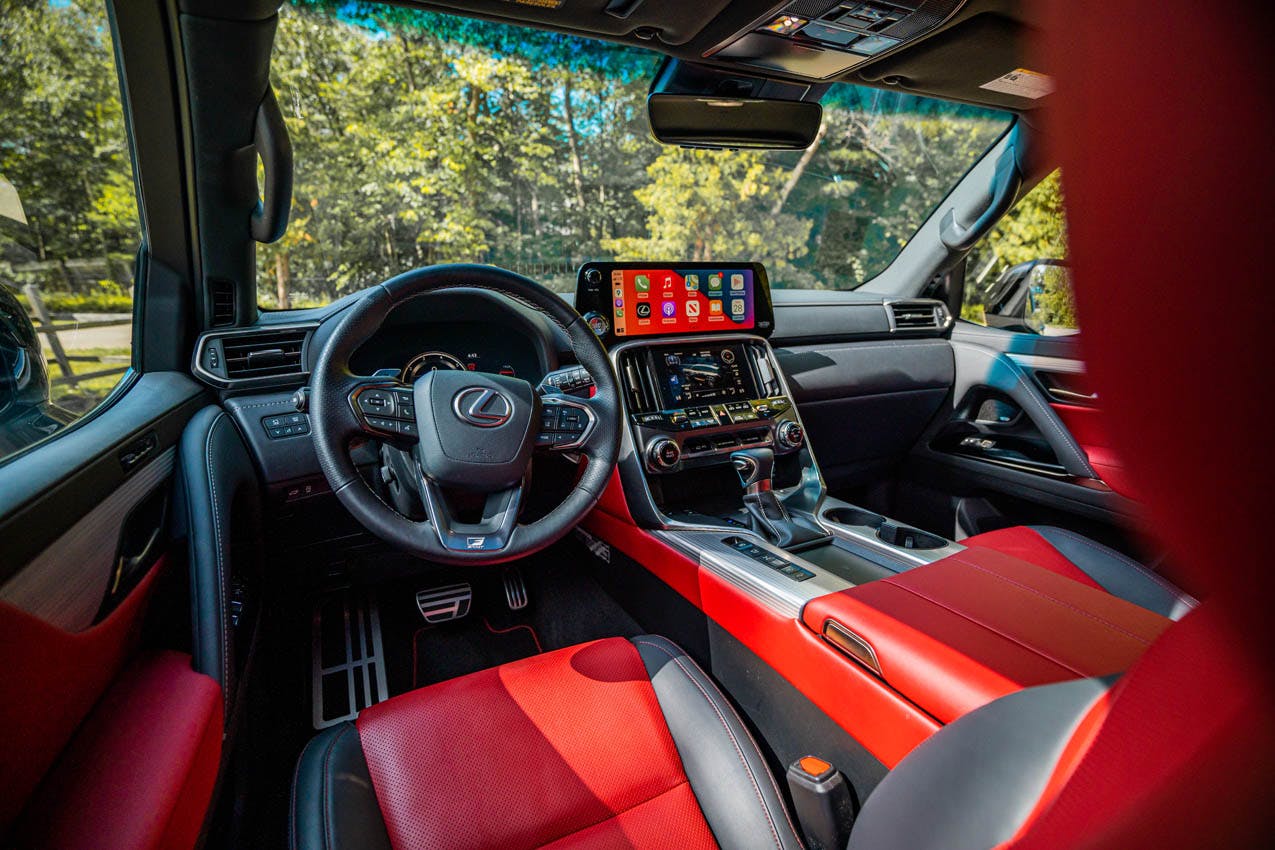
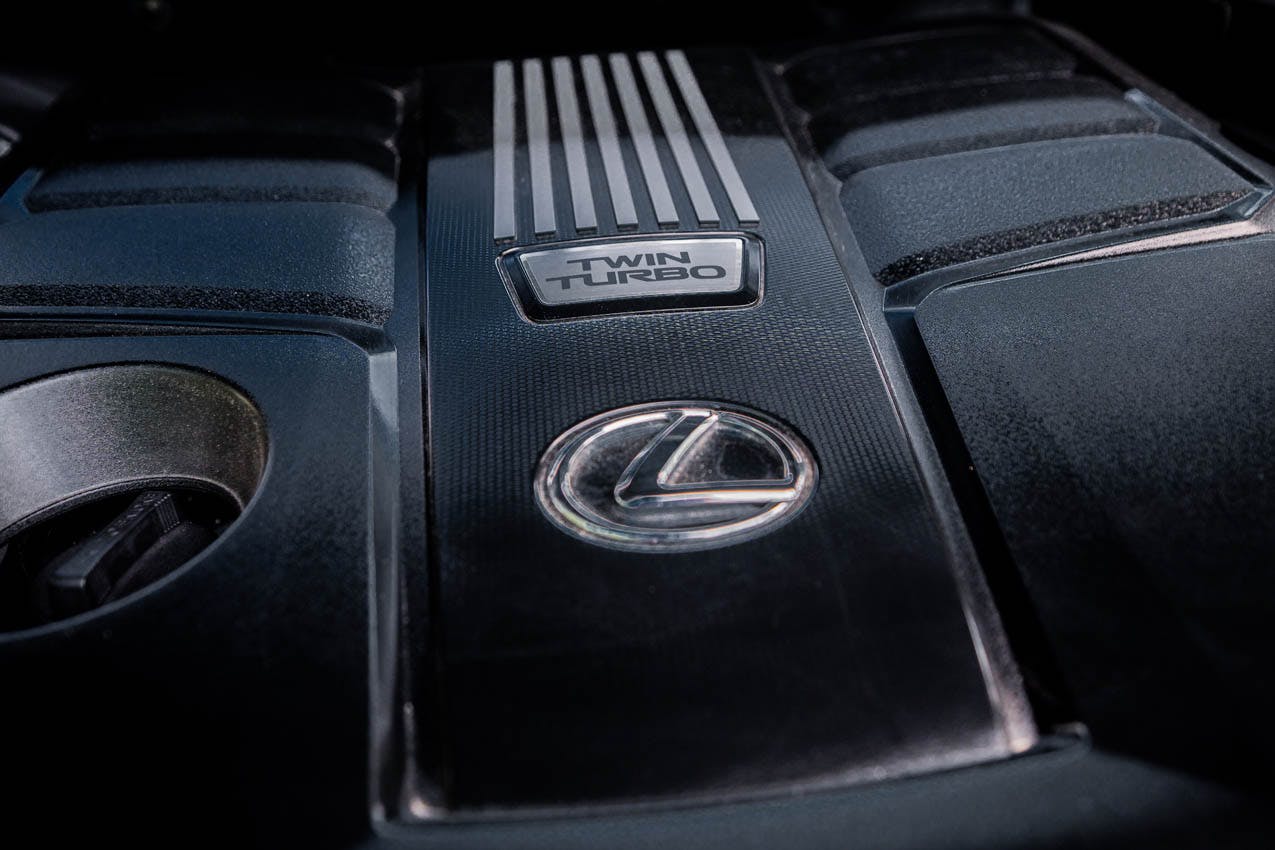








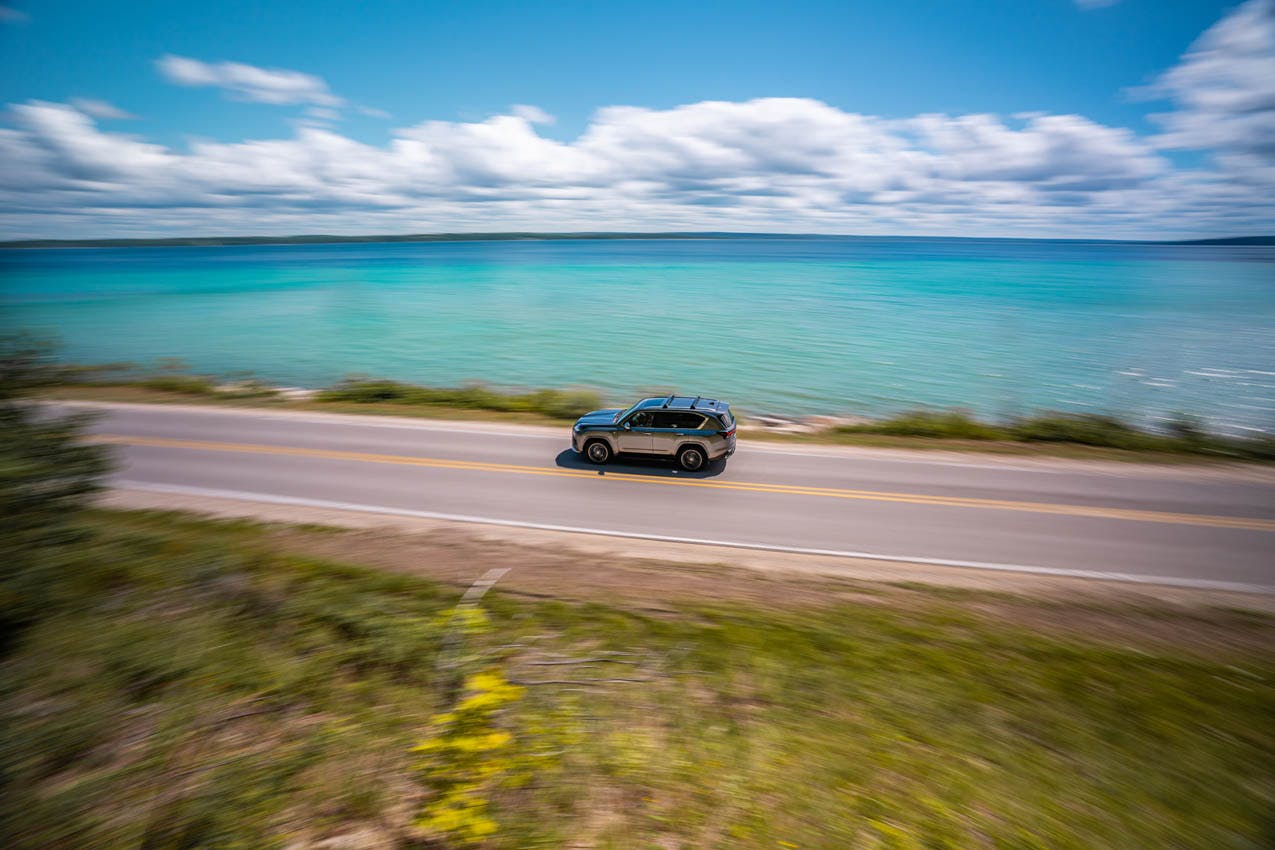
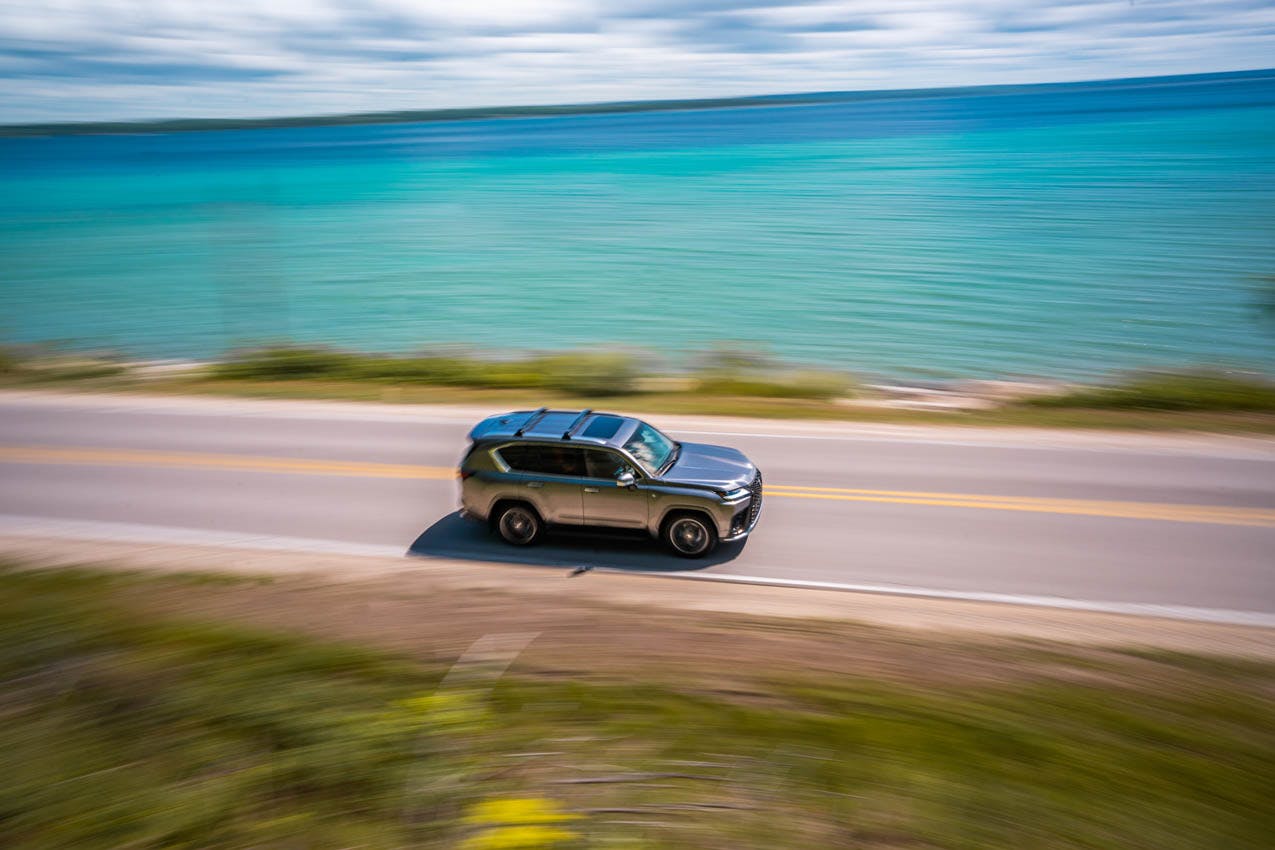
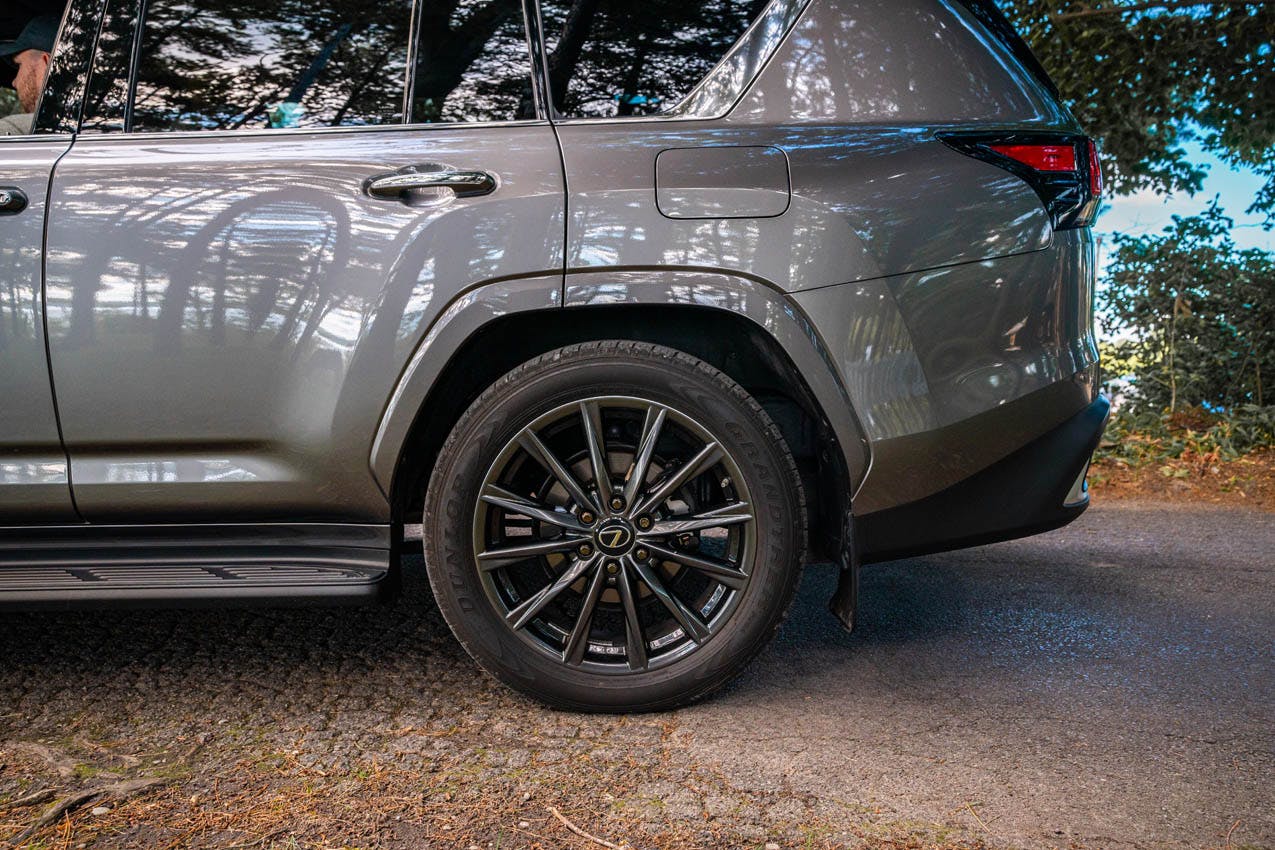
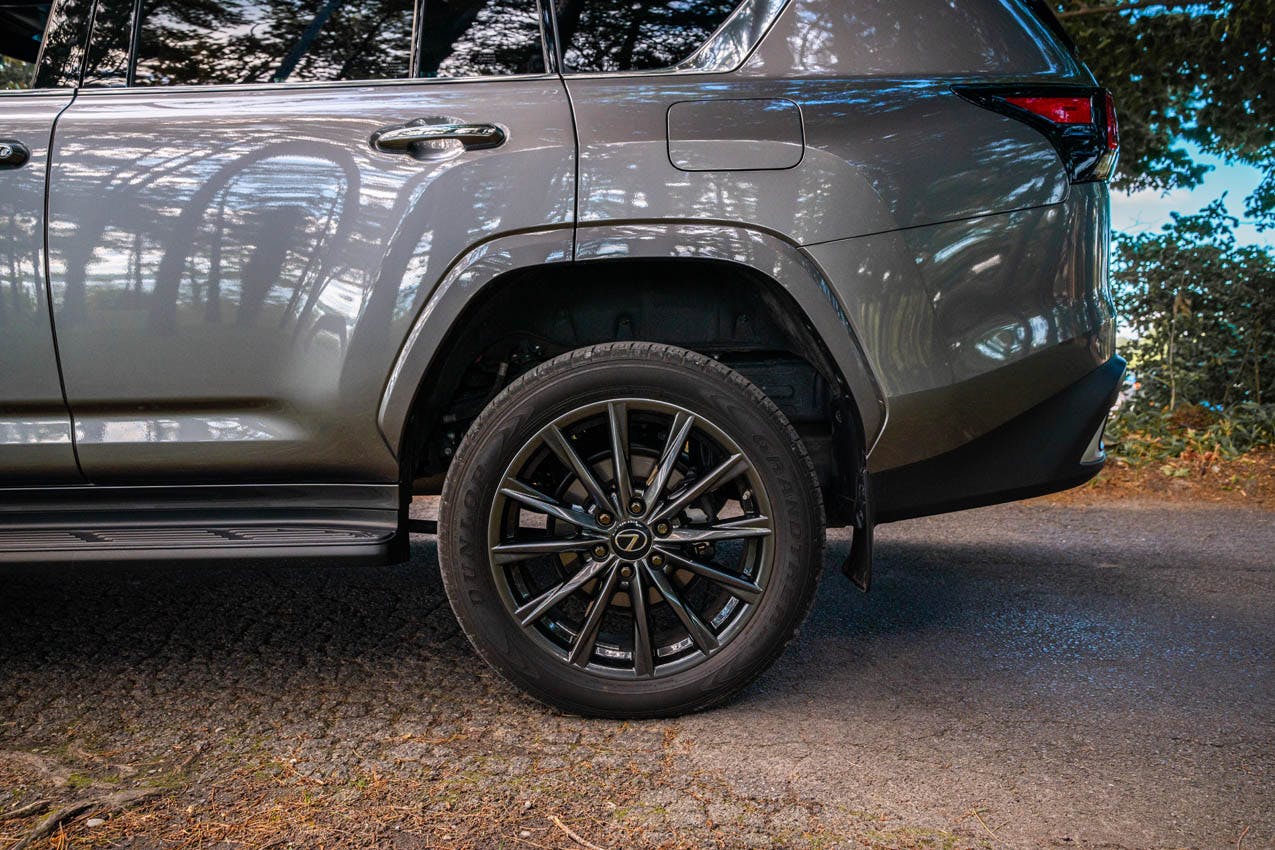
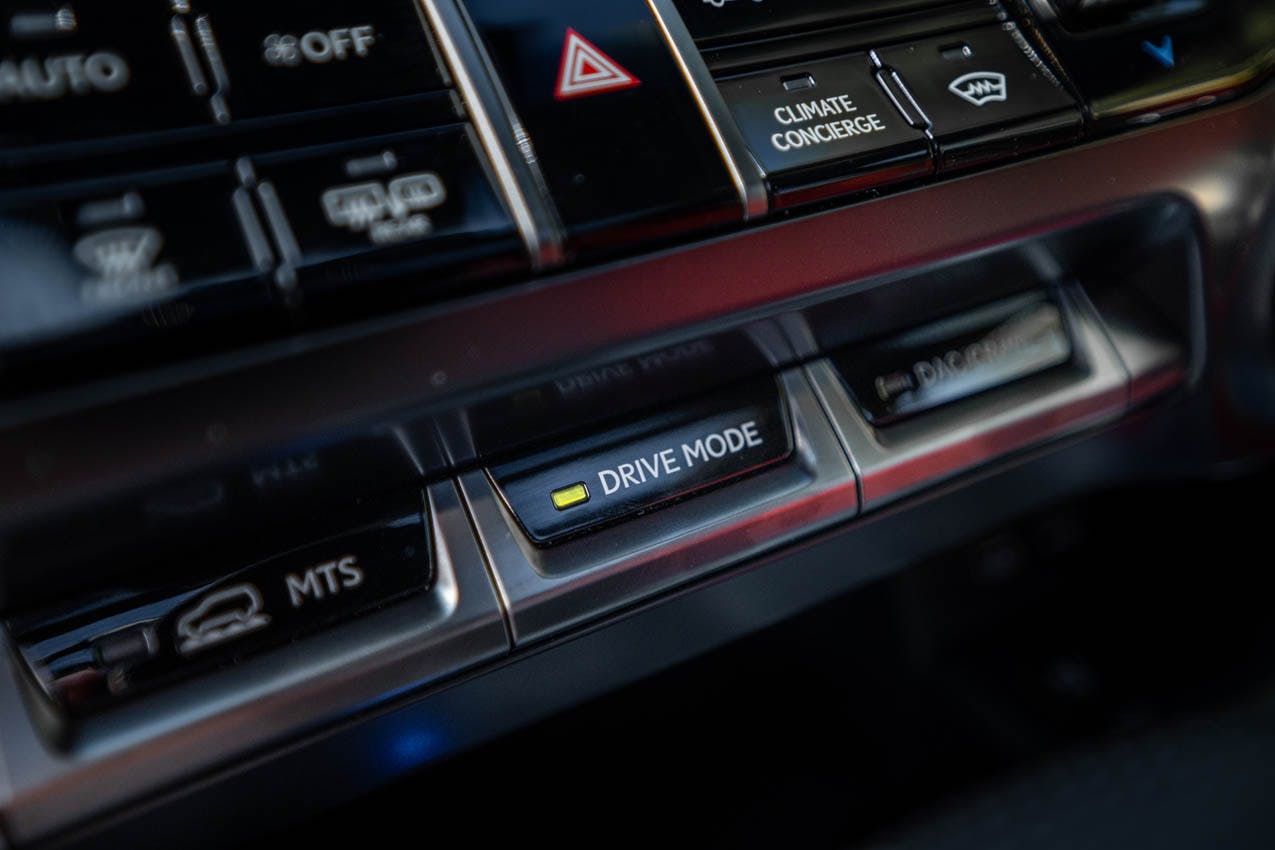
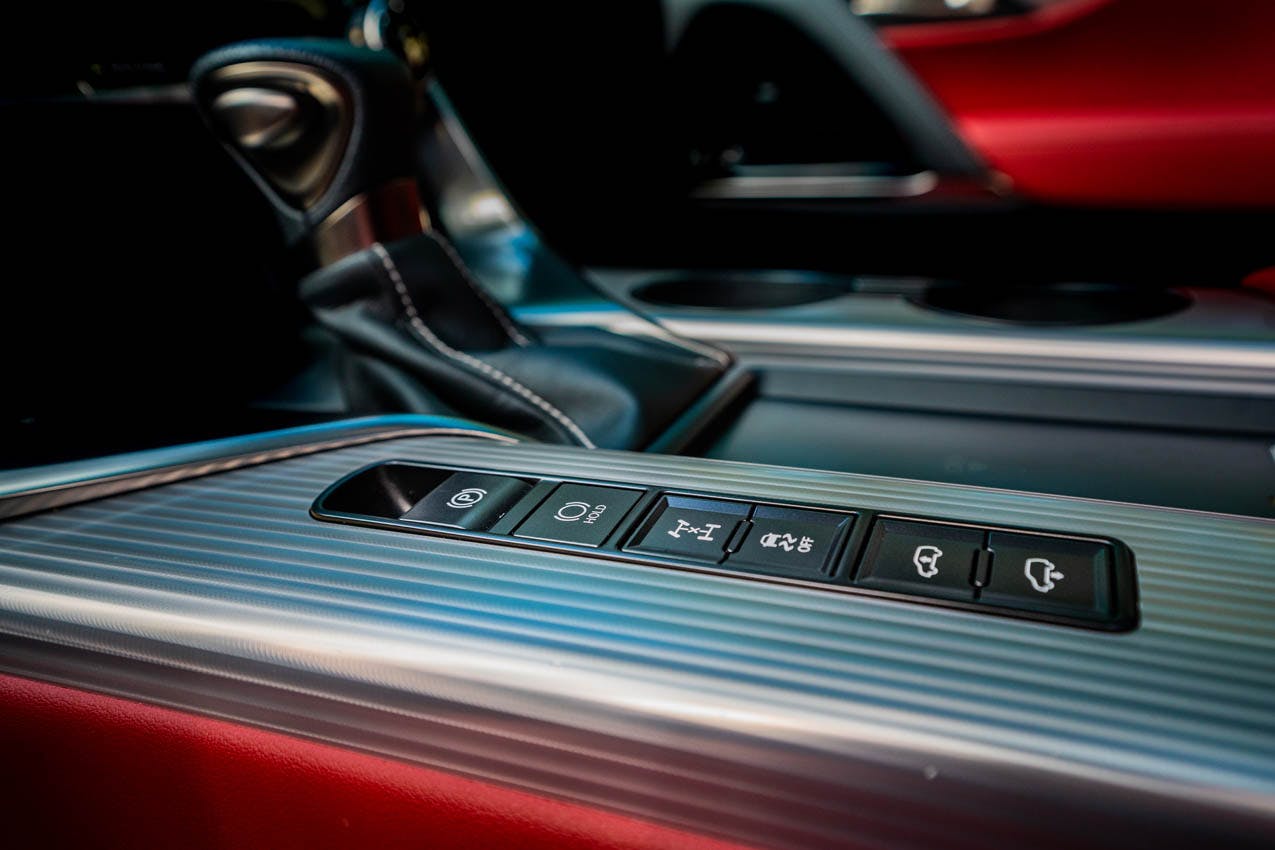
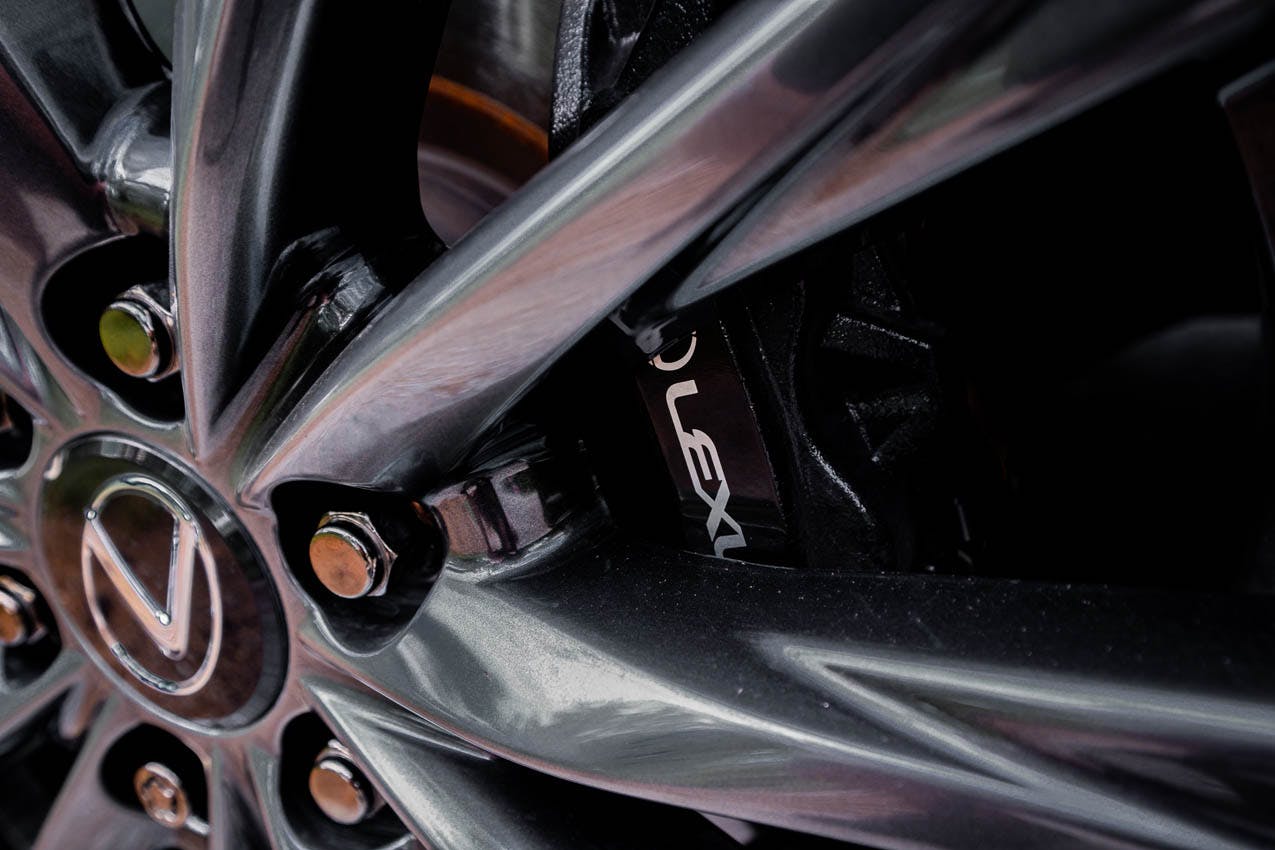

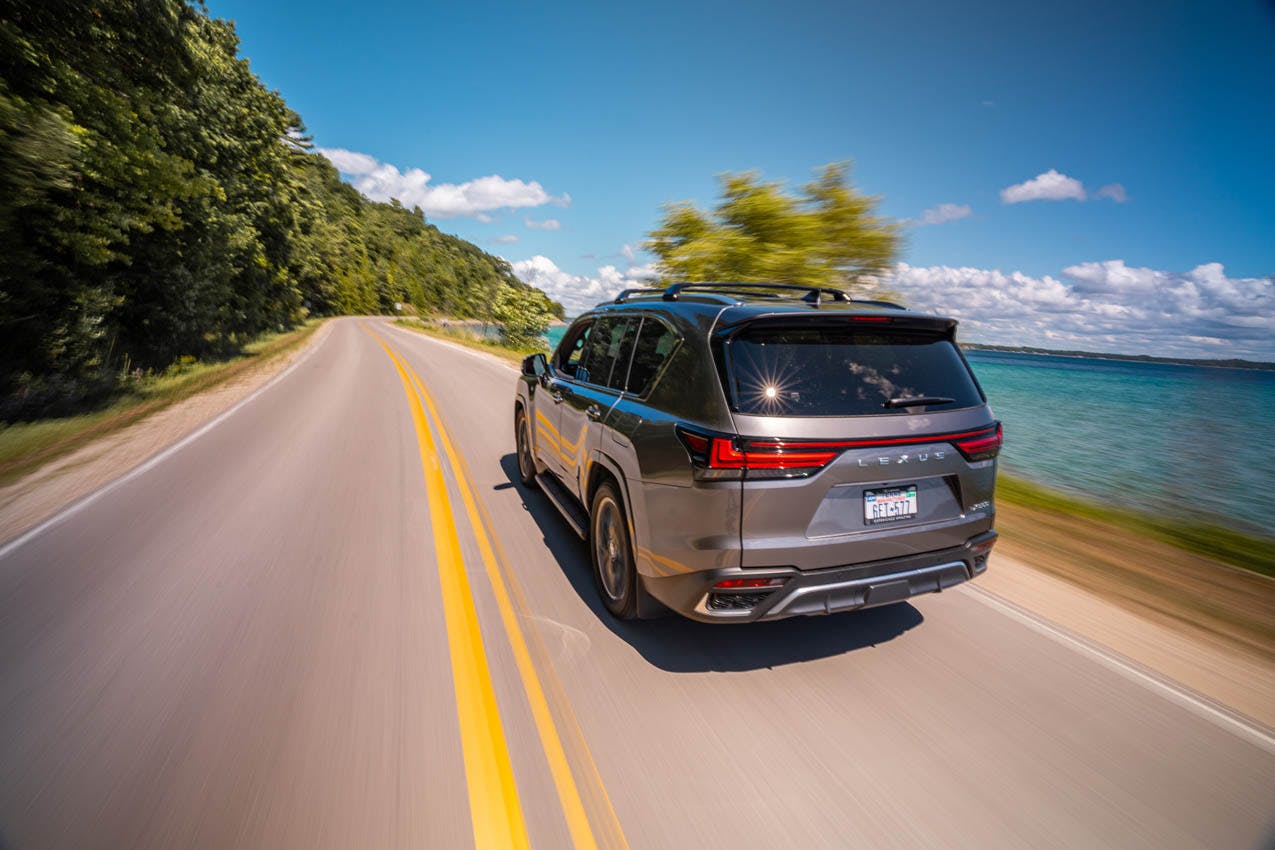
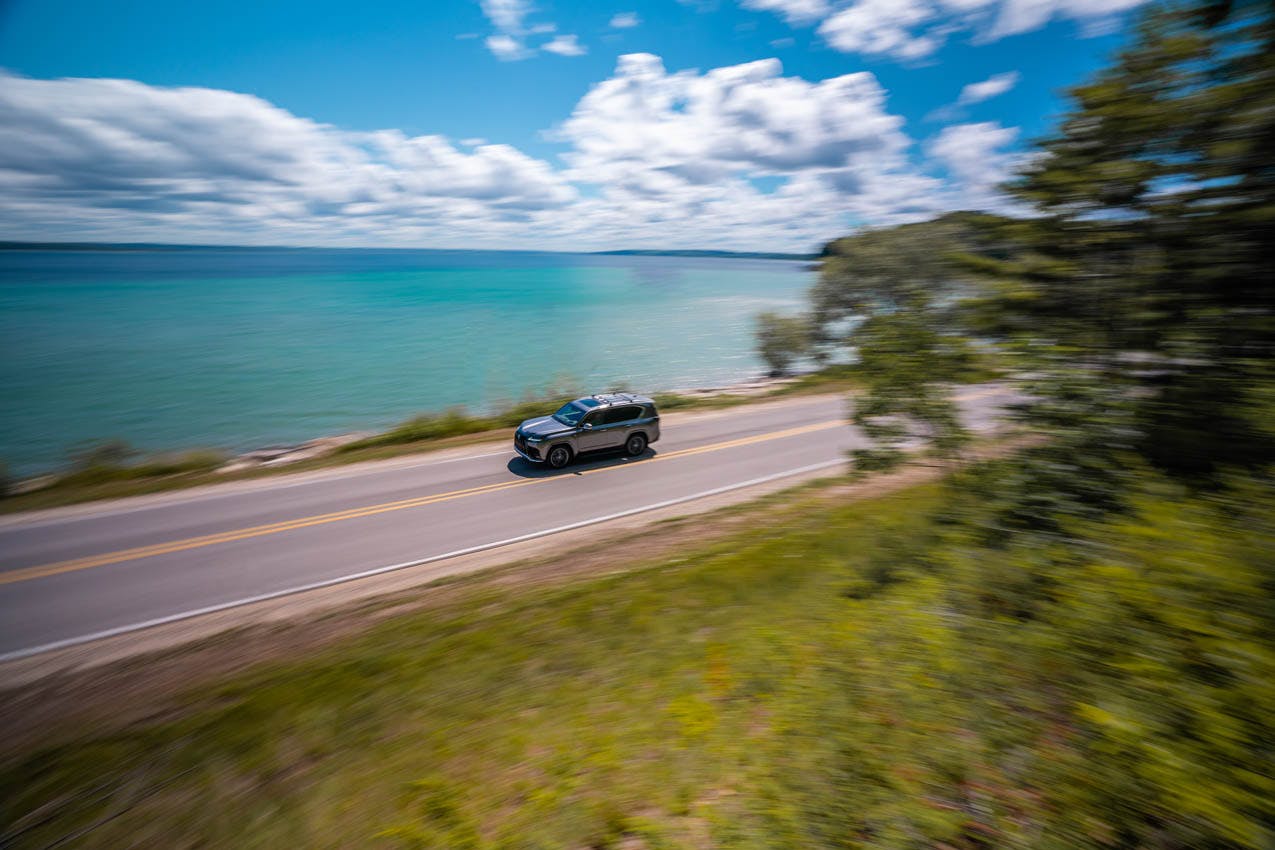
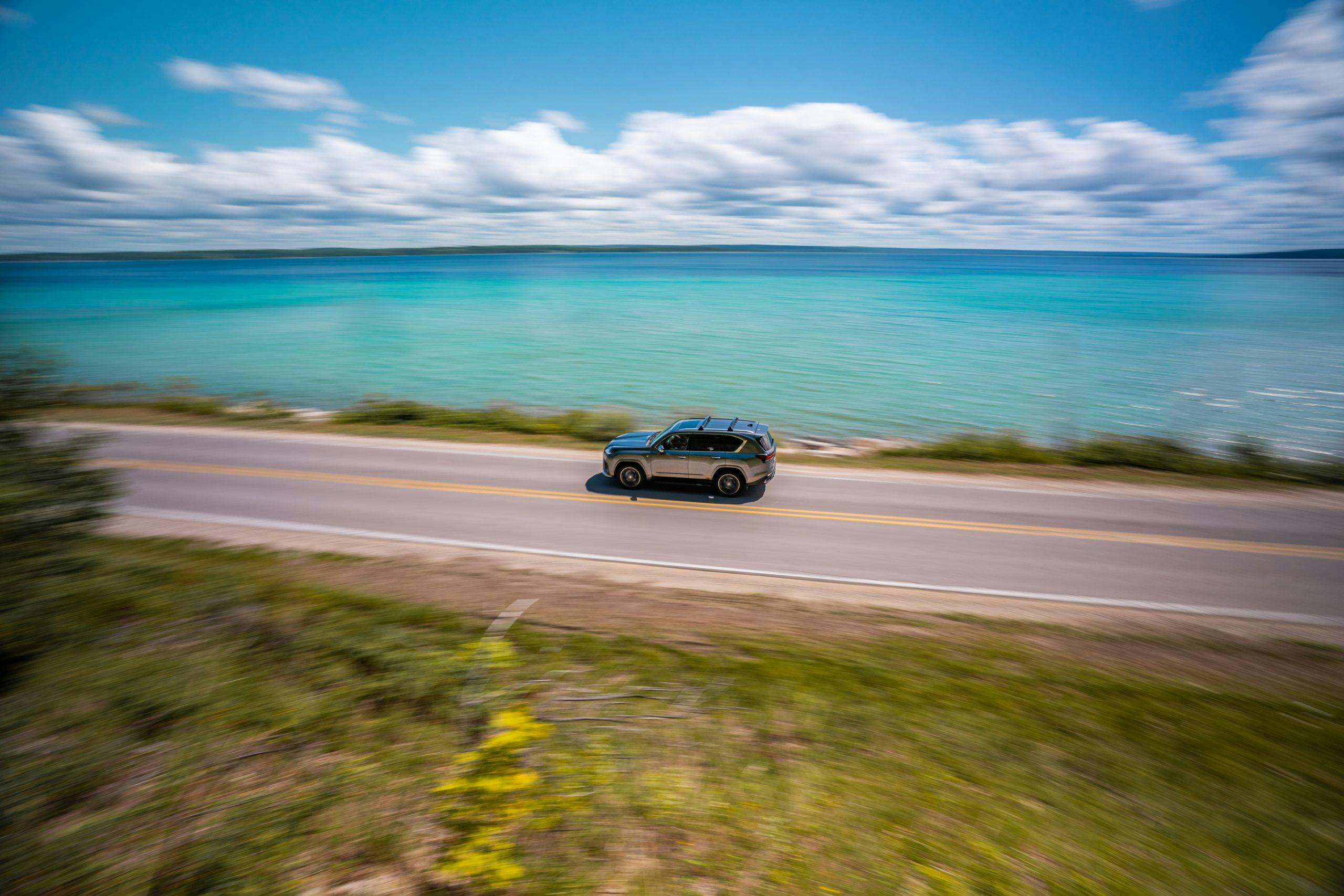
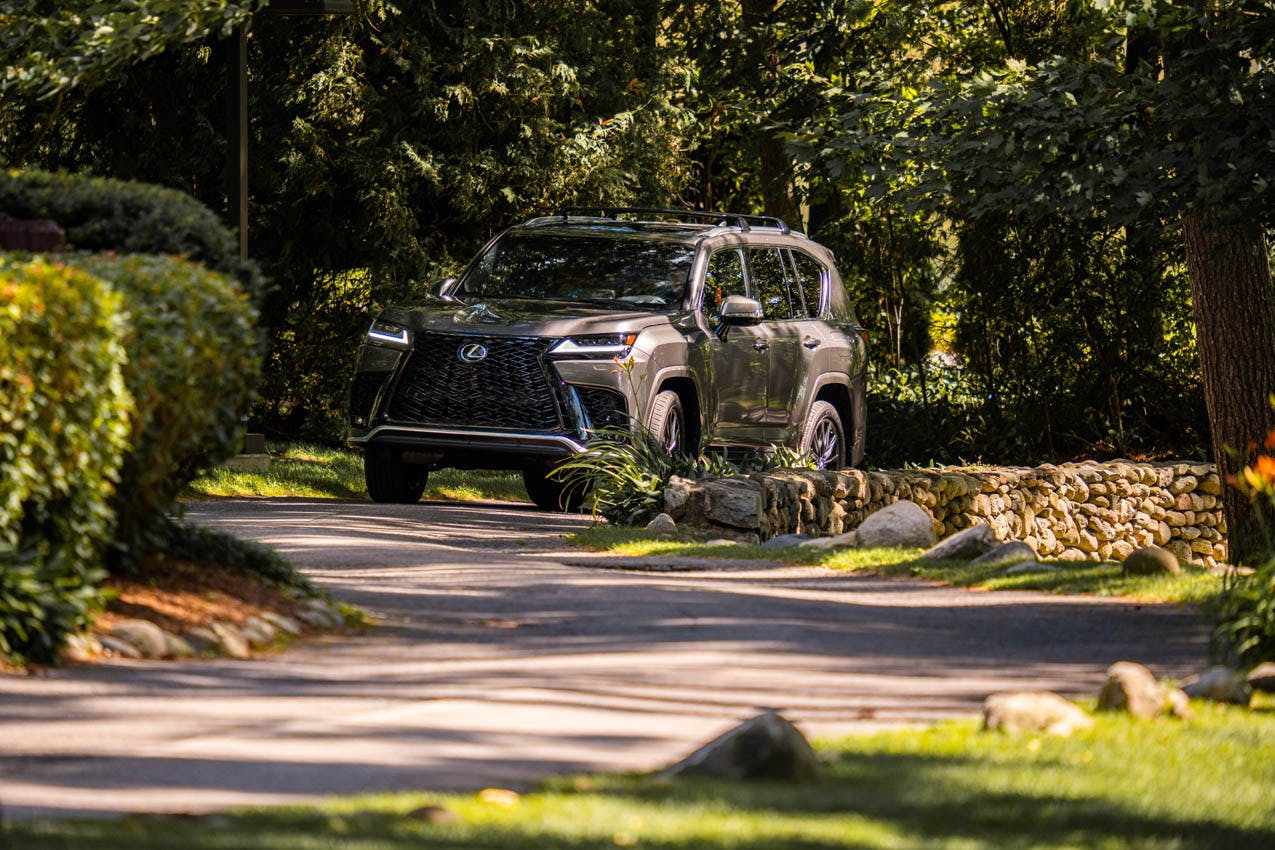
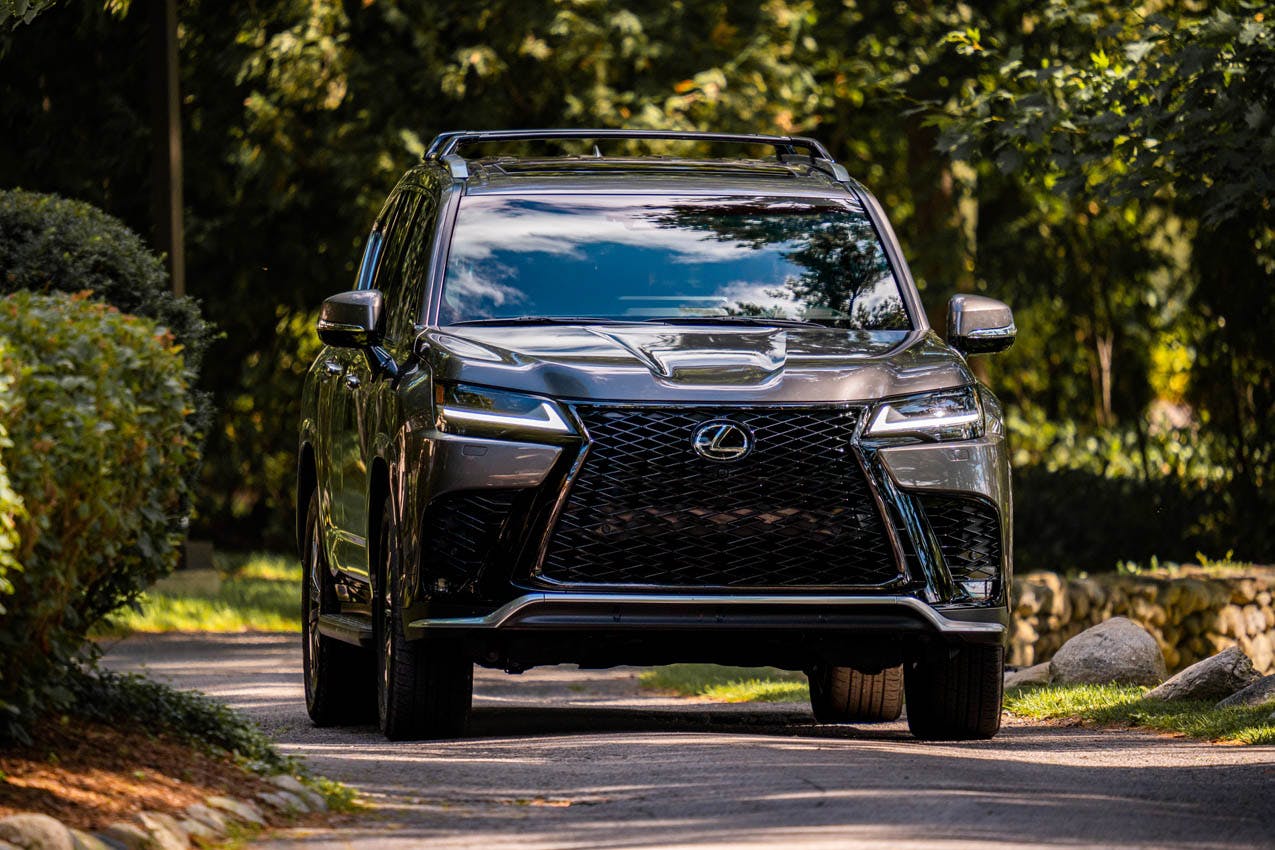
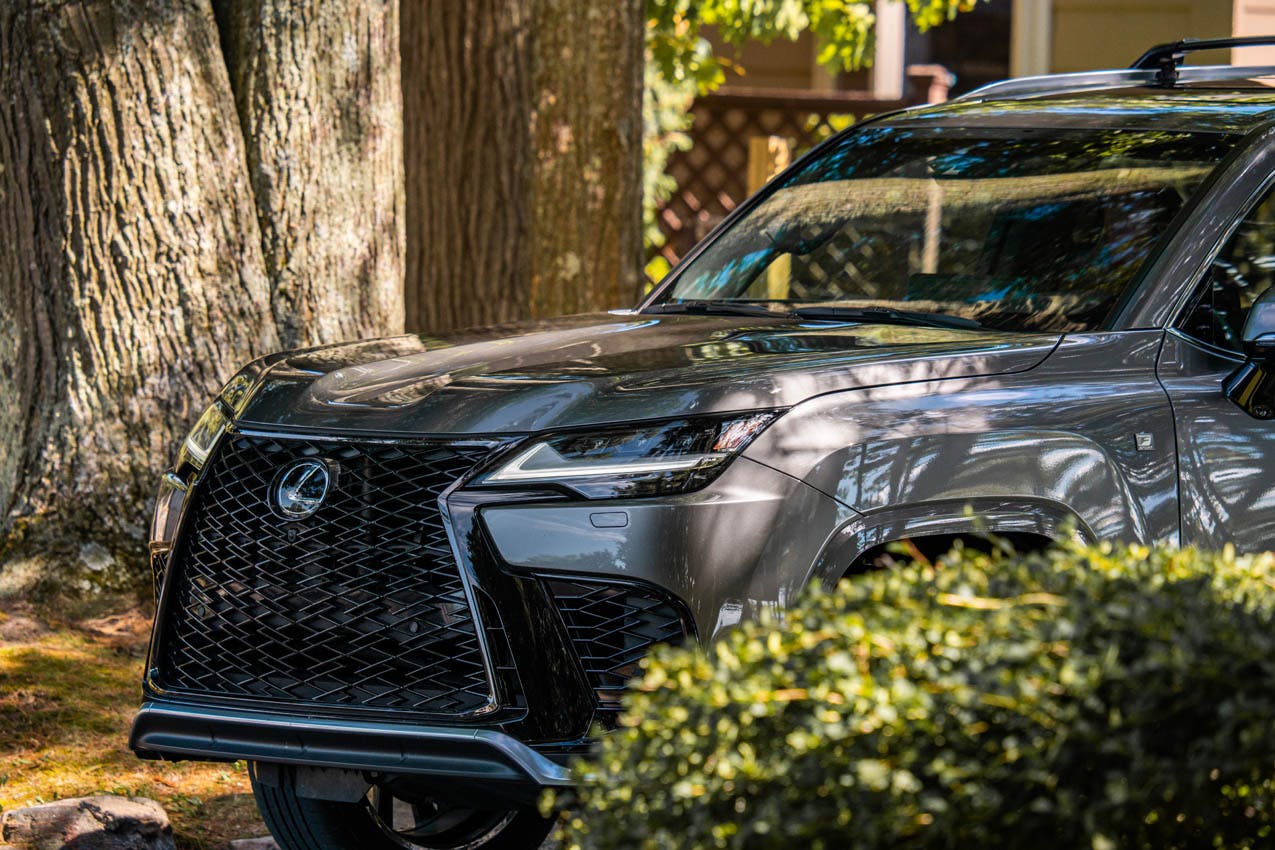
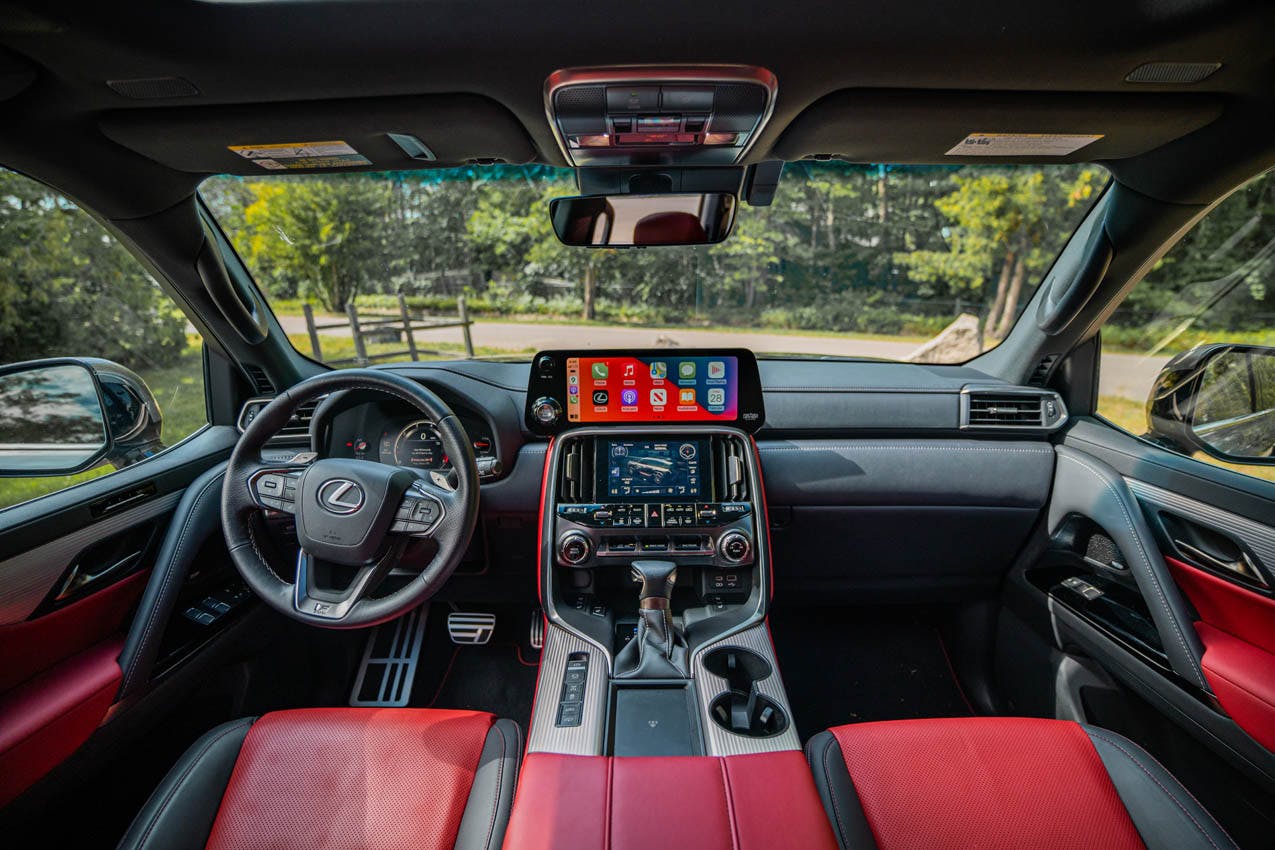

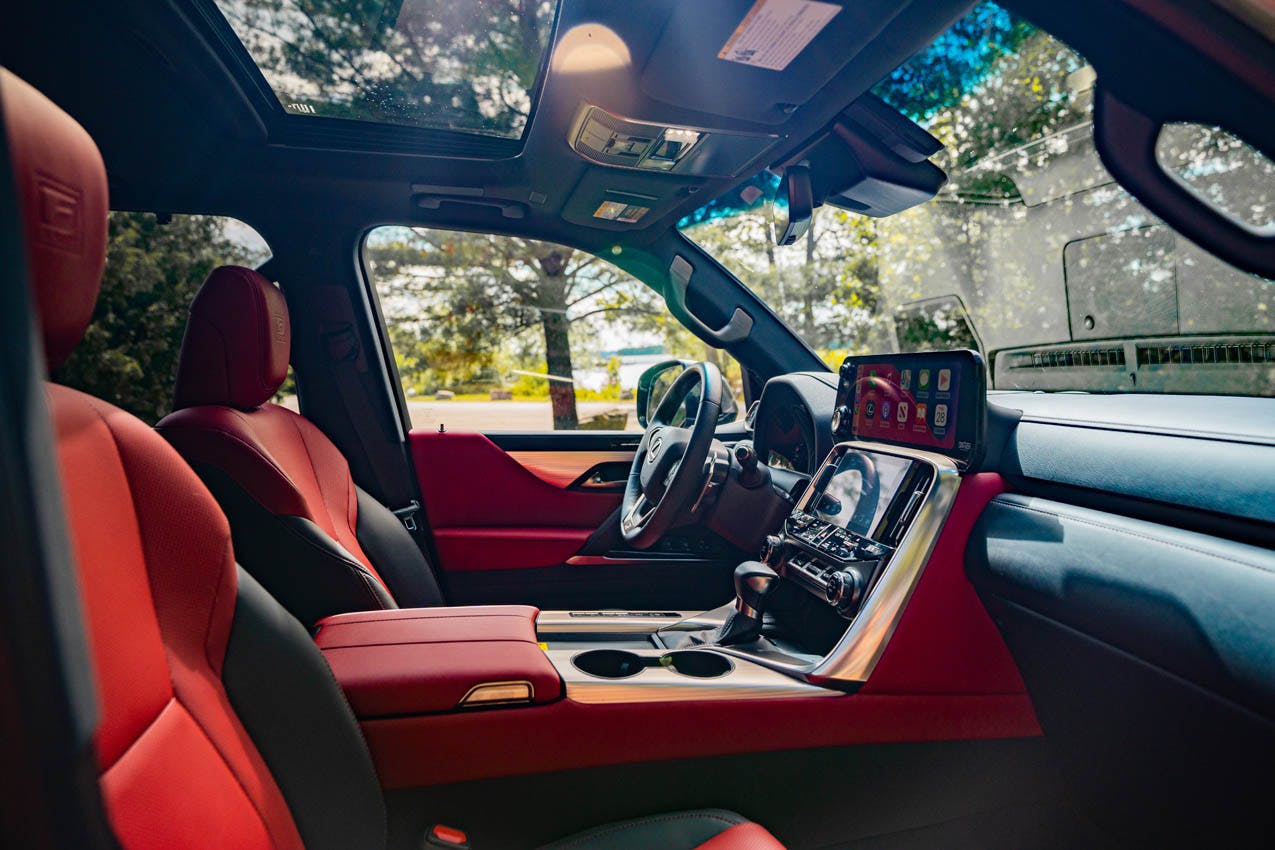
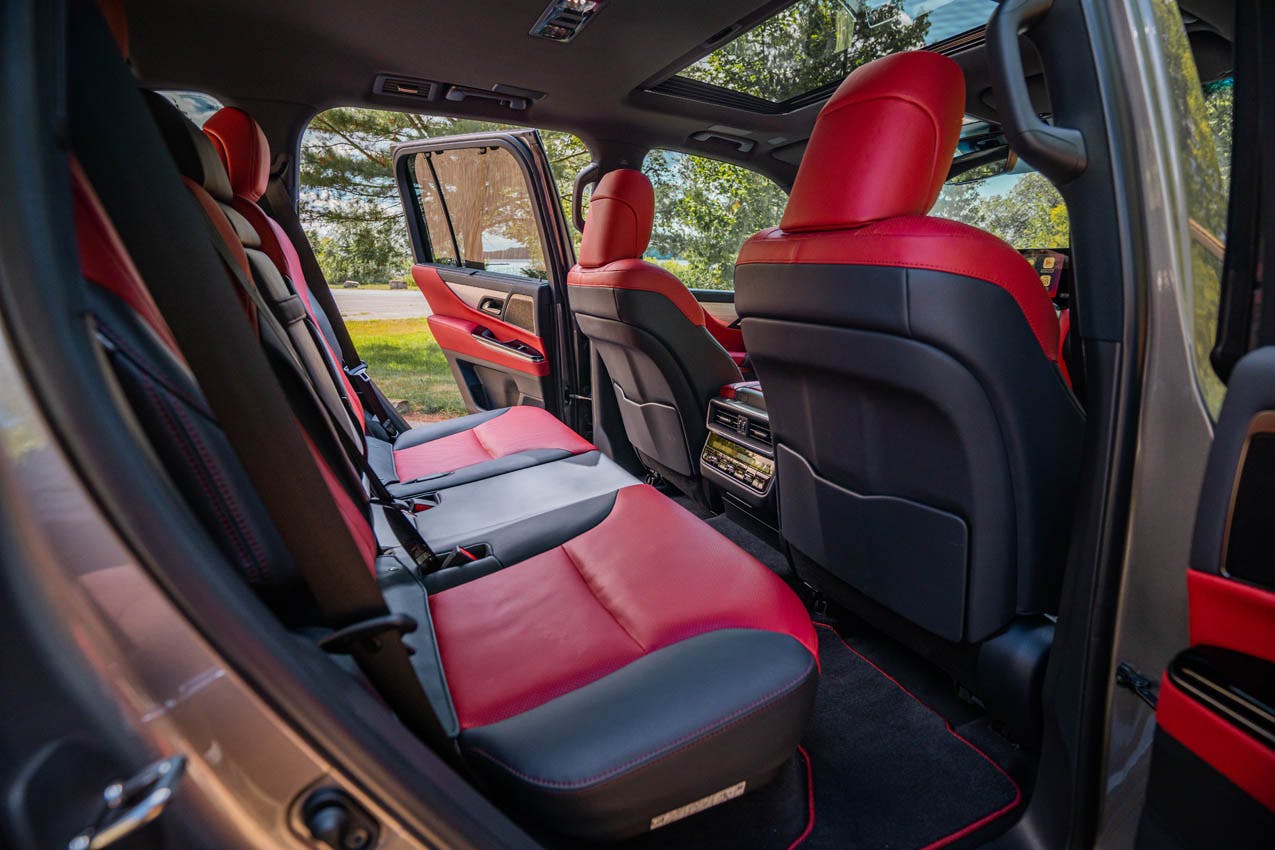
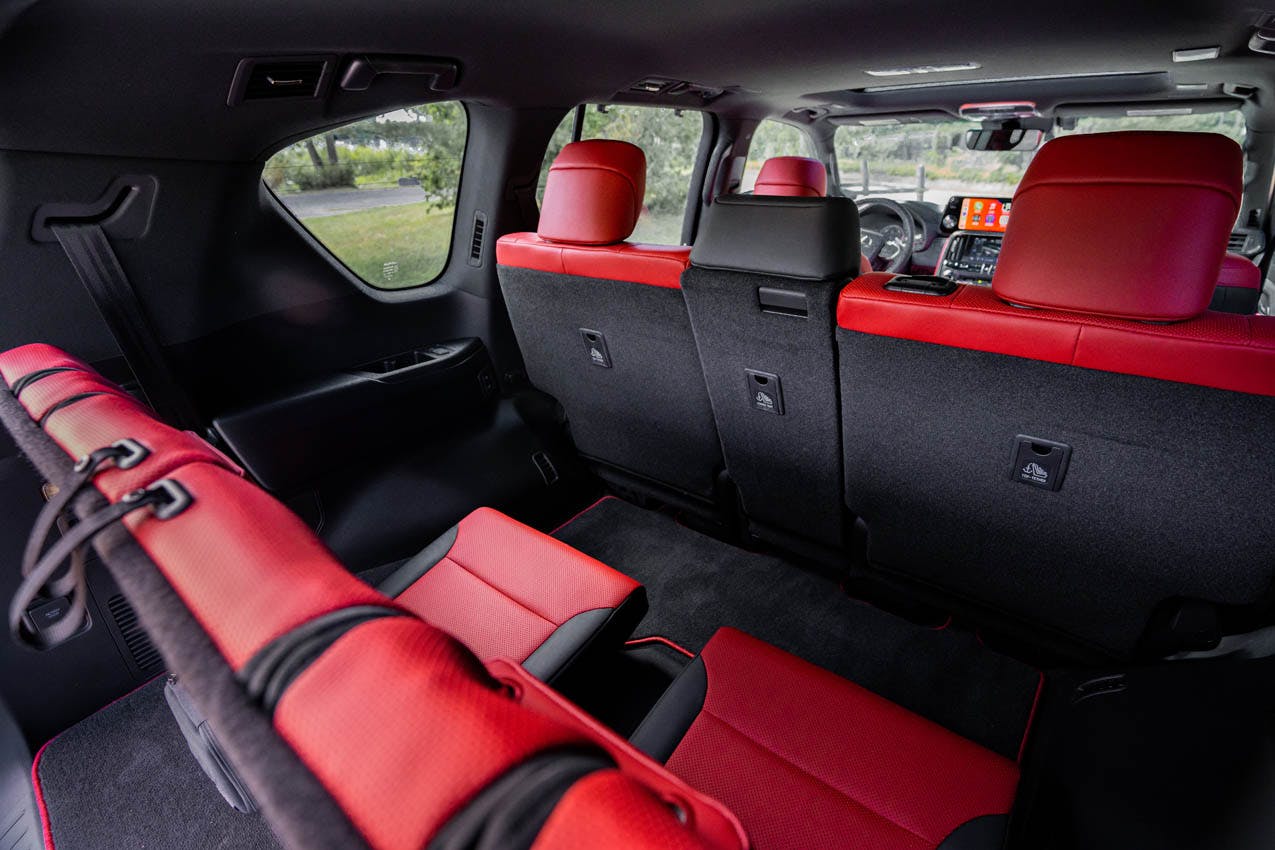
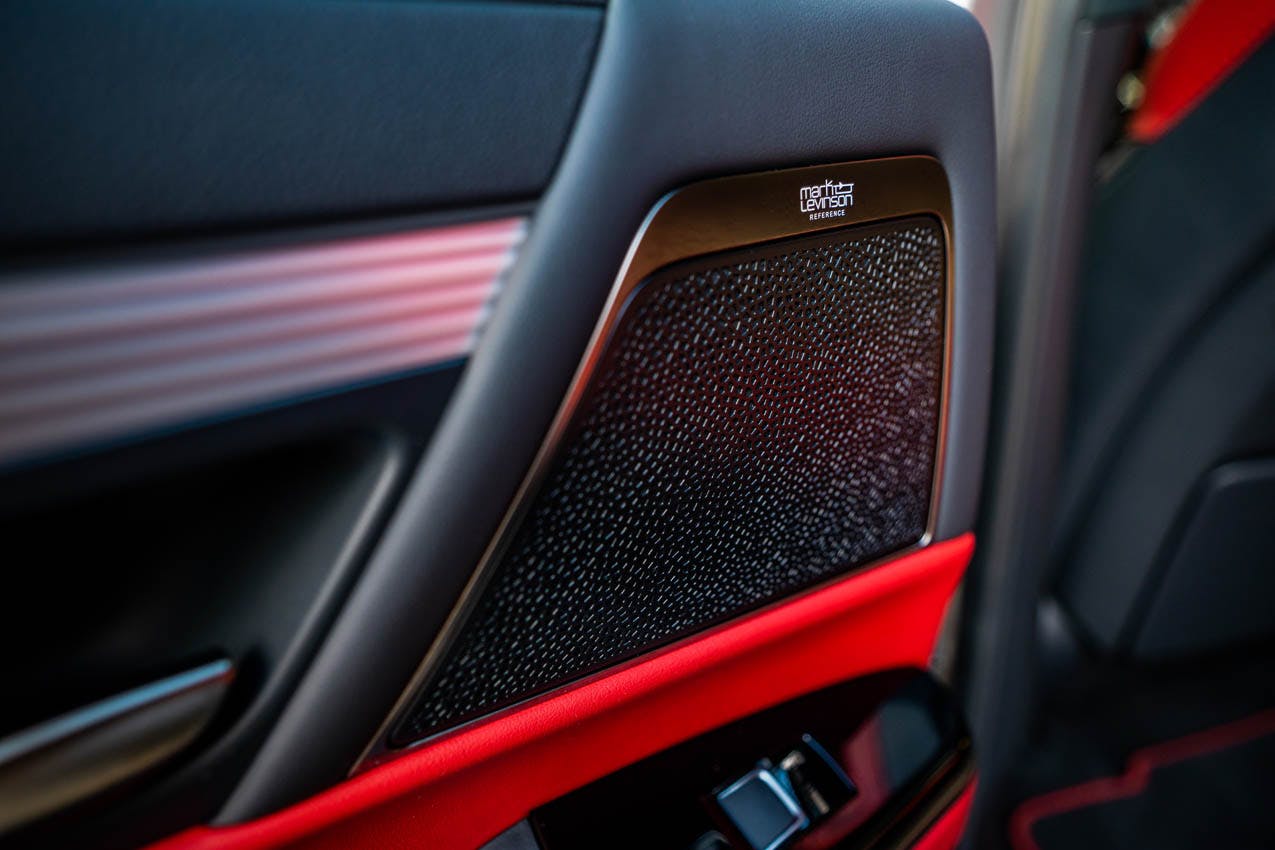
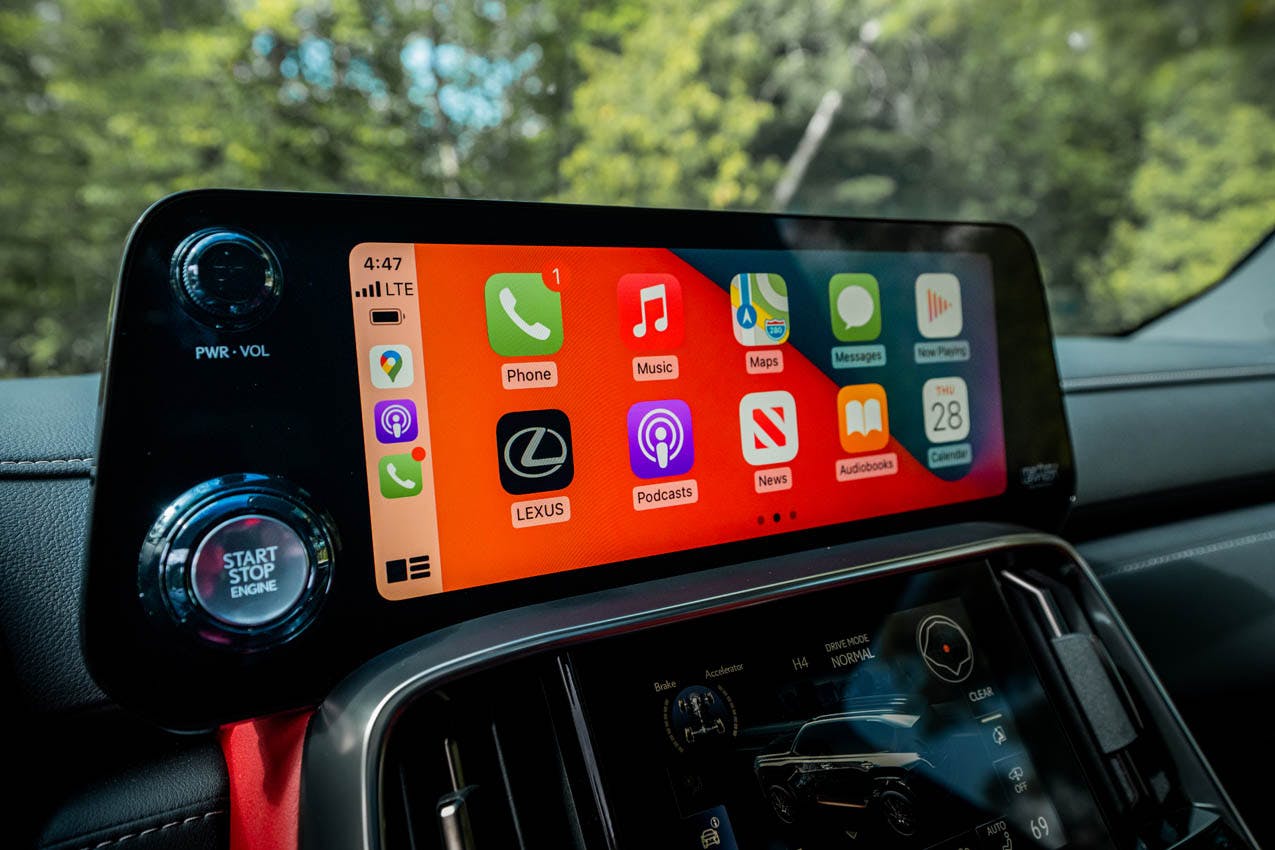


























Based on my short amount of experience with the new LX, the third row seems more hamstrung by the solid rear axle, which raises the floor and doesn’t allow third-row occupants to sink their feet into the floor, than the wheelbase. The wheelbase stands to hurt second-row seating, which I’m sure isn’t spectacular.
That said, the thing to note about the wheelbase on the LX compared to those of other lux SUVs is that some of those competitors use that wheelbase advantage on having a longer dash-to-axle section, and not as much as you’d think on the cabin itself.
Still, I think Lexus needed to make a larger SUV. Even if the solid axle was a limitation of the TNGA-F platform and frame designs, to really make the Lexus shine, they needed to actually decouple the LX from the Land Cruiser and give the former a longer body structure.